Fought At Hanover
2439 days 11 hours 39 minutes ago
Battle Report
Sudden Strike at Hanover
100 POINTSGreetings and welcome to my first batrep here! For one of our first games in this campaign, my motor rifle battalion would test its steel against the might of the valiant American infantry forces of my opponent. Staying true to the fluff, the US would mount a static defense to blunt the soviet onslaught. We decided to throw the dice to see what mission would be played and came up with hasty attack.
The forces:
I played my BMP motor rifle battalion with plenty of support as usual:
HQ: 1x BMP-1 / AK-74 Team 1 P
BMP-2 MRC: 10x BMP-2, 7x AK-74 Team, 6x RPG-7 Team,
2x PKM Team, 1x Gremlin AA Team 20 P
BMP-2 MRC: 10x BMP-2, 7x AK-74 Team, 6x RPG-7 Team,
2x PKM Team, 1x Gremlin AA Team 20 P
Shilka AA Platoon: 2x Shilka 2 P
BMP-1 Recon Platoon: 2x BMP-1 Recon 2 P
T-64 Tank Company: 4xT-64 with AT-8 Songsters,
3x Mine Clearing Device 22P
Support:
MI-24 Hind AHC: 6x Hind 15 P
BM-21 Hail RLB: 3x Hail 4 P
Storm AT Platoon: 3x Storm 3 P
SA-8 Gecko SAM Platoon: 4x Gecko 8 P
BMP-1 Recon Platoon: 2x BMP-1 Recon 2 P
BMP-1 OP 1 P
Formed around the solid core of 2 beefy motor rifle companies, my single formation also brings a lot of support in the form of artillery, 2 recon units for spearheads, decent AA assets - and not to forget, the brutal hammer of 6 Hinds. (The Spandrels serve as stand-ins for the Storms)
My opponent would stand his ground using a combined force of 2 US infantry formations:
Note: Due to the severe lack of high-power AA units for the Americans, we decided that the US player could use one unit of West German Rolands, instead of the VATs – we are fighting on German soil after all ;-)! Also, we had to use a lot of stand-ins.
Formation No.1: M113 Mech Combat Team
HQ: 1x M113, 1x M-16 Team 1 P
M113 MP: 4x M113, 4x M249 SAW Team, 4x Dragon Team 7 P
M113 MP: 4x M113, 4x M249 SAW Team, 4x Dragon Team 7 P
ITV AT Platoon: 2x ITV 3 P
ITV AT Platoon: 2x ITV 3 P
ITV AT Platoon: 2x ITV 3 P
ITV AT Platoon: 2x ITV 3 P
M1 Abrams Tank Platoon: 3x M1 Abrams 24 P
Formation No.2: M113 Mech Combat Team
HQ: 1x M113, 1x M-16 Team 1 P
M113 MP: 4x M113, 4x M249 SAW Team, 4x Dragon Team 7 P
M113 MP: 4x M113, 4x M249 SAW Team, 3x Dragon Team 6 P
Support:
Roland AA platoon: 4x Roland 6 P
A-10 Flight: 4x A-10 20 P
M109 FAB: 3x M109 + bomblets 8 P
M113 FIST: 1x FIST 1 P
Relying on the staying power of 4 big infantry platoons and supporting artillery to slow and weaken the enemy, a counterattack would then be possible with a unit of M1 tanks and the awe-inspiring might of a full flight of A10s!
The Russian forces of course had plans of their own. This area would have to be passed quickly, so the NATO lines could be penetrated and a surprise attack on Hannover be launched directly afterwards. Therefore, the soviet army would push for a quick victory, instead of a battle of attrition that would give the US valuable time to reinforce their line.
Three points on the battlefield would be vital to achieve this:
The paved road would lead directly through the industrial complex, allowing for quick traverse of forces – at least if the breakthrough could be achieved before pioneers would mine it.
The area in the upper middle corner featured less obstacles like dense woods or potential ambush sites like corn fields and could serve as an acceptable gap to push the advance.
Lastly, there was an important bridge across the local river on the right side. Although the river was comparatively shallow, it would still slow the advance to an unacceptable amount, unless this bridge could be used.
The deployment:
The message of the soviets rapid advance hit NATO headquarters at the last possible moment. The opening moves in this great game of war had been carefully planned by high command and were now executed with an effectiveness, that analysts had thought the soviet army incapable of.
This included a broad jamming of radio frequencies as well as many acts of sabotage carried out by special forces. Scrambling to put up the best possible defense, the US commander sent 2 units of infantry to take up position at the industrial complex and a lush little mansion overlooking the path in the middle of the battlefield.
A unit of Rolands also took center stage behind a hill right behind the same mansion.
The US commander also received confirmation for close air support from a nearby airfield, although the connection was severed abruptly.
The soviets had watched the enemy deployment for some time and devised a very simple yet effective plan. Completely ignoring the most obvious exit point objective in the industrial complex, the commander instead signaled for the 2 BMP companies to get into position for a frontal assault on the less guarded positions at the bridge.
His Hail artillery battery and Gopher AA took position at the village while the flight of Hinds was at the ready just slightly off the battlefield.
Soviet intelligence had also notified the commander of an American artillery battery somewhere in the region, but it was nowhere to be found and probably in a good ambush position. Holstering his binoculars, he grunted – this unit could wreak havoc on his advancing comrades from the infantry.
However, there was no turning back now - turning around for his radioman, he gave the order for the advance. Smoke from almost 2 dozen exhausts rose up, as the IFVs gunned their engines and plowed forward. The liberation of Europe had begun!
Meanwhile, coming forward from their cover, the crews of the Gophers and Hails went back to man their vehicles once again.
The BMPs advanced forward, fanning out slightly to maximize their firepower. The infantry pushed towards the bridge, trying to make good use of any cover they could find.
The newly arrived T-64 tanks opened fire with their stabilized main guns and managed to destroy 2 teams of the now pinned platoon.
The air was filled with the hammering of autocannons as the BMP-2s opened fire. The enemy proved to be a hard target, but still, 1 M113 and 1 ITV exploded, while another M113 was bailed out. The ITVs, understanding the importance of their position, stood strong in the face of the soviet advance.
The Roland AA battery remained silent for quite some time, expecting the A10s to have finally arrived. To their horror, and the angry screaming of their commander, they realized that the new echoes on their radar were in fact the enemies Hinds! They launched a hasty salvo, but it was ineffective and did not manage to shoot down any of the new targets. However, their salvo, as well as the desperate fire from a number of 50cals, managed to threw the Hind gunners off target and so only one of the howitzers was bailed out.
At this time, the defenders of the bridge could see a solid wall of soviet soldiers charging forward – there was no way of holding them off, not without support. Cutting his losses, the US commander grudgingly sounded the retreat. His forces would soon be needed for the defense of other valuable NATO assets.
The soviets had achieved their objective – the bridge was secured and the way was free for a lightning attack on Hannover!
Conclusion:
We called the game after US turn 2 – soviet infantry would have been on the objective in turn 3 and barely anyone there to stop them (we were playing the new rules with the adapted victory conditions). Sadly, the A10s never saw the table when they were really desperately needed. This allowed me to push on the objective with little to stop me from capturing it. Reserves for the US forces would arrive in the 3rd turn at best, so they would come too late to do any good. Then again, hasty attack has always been hard on the defender. A big thank you to my opponent for taking it lightly and being a good sport!
Battle Report Author
Recommend Commander For Commendation
Share this battle with friends
PizzamannWins

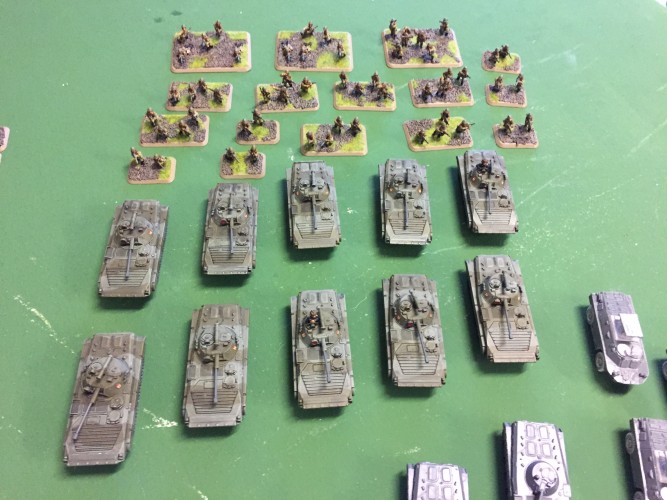



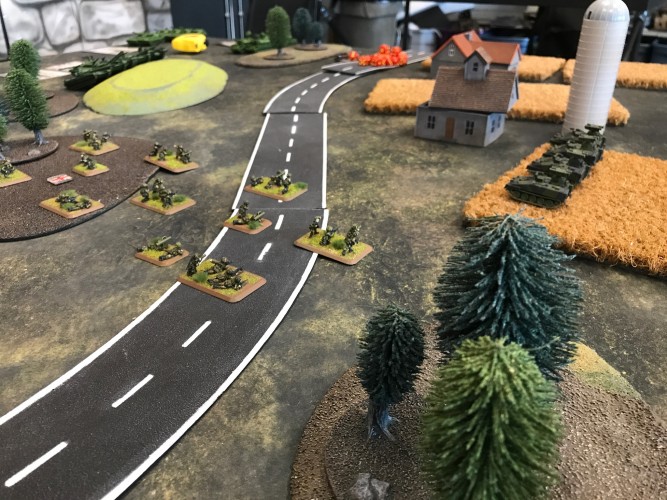

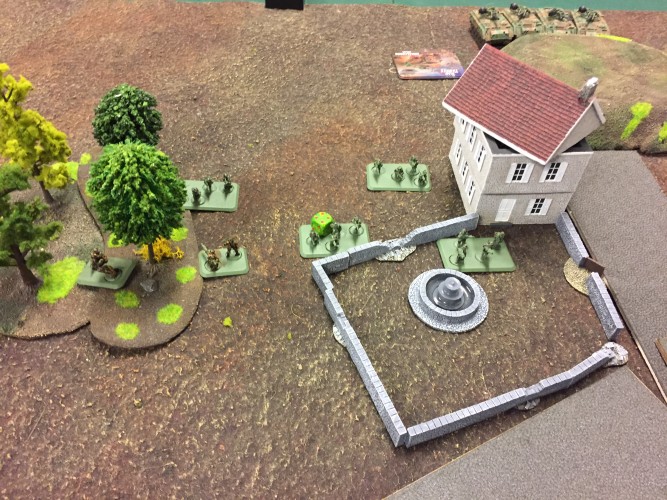
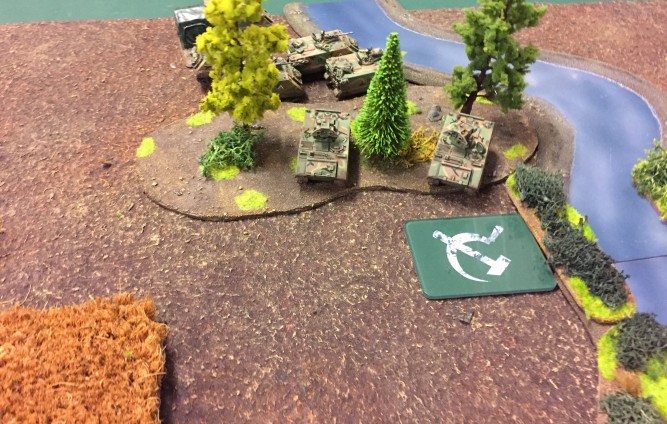

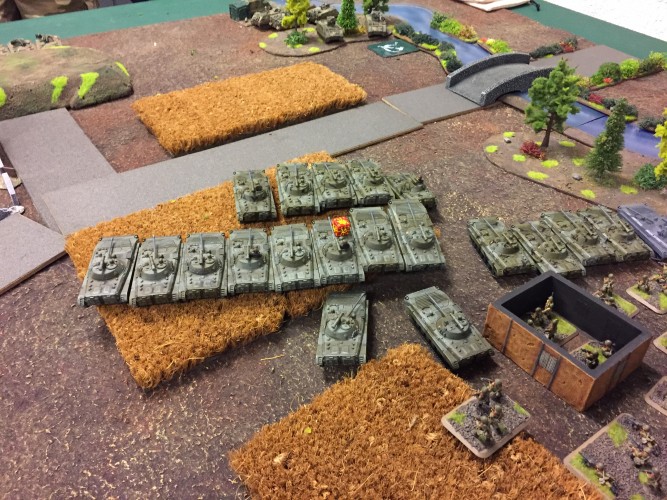


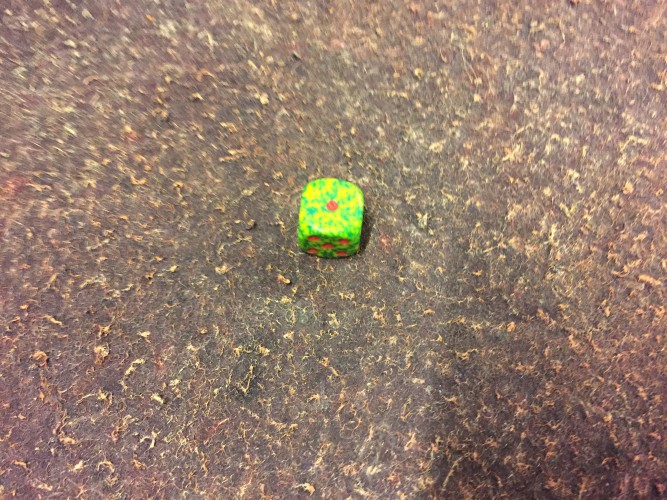

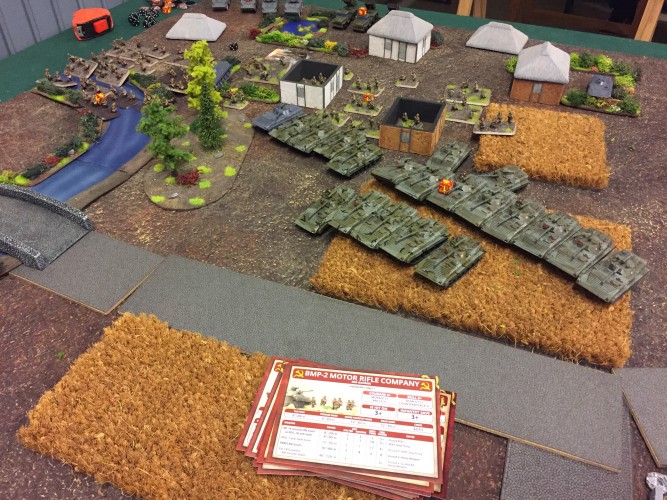
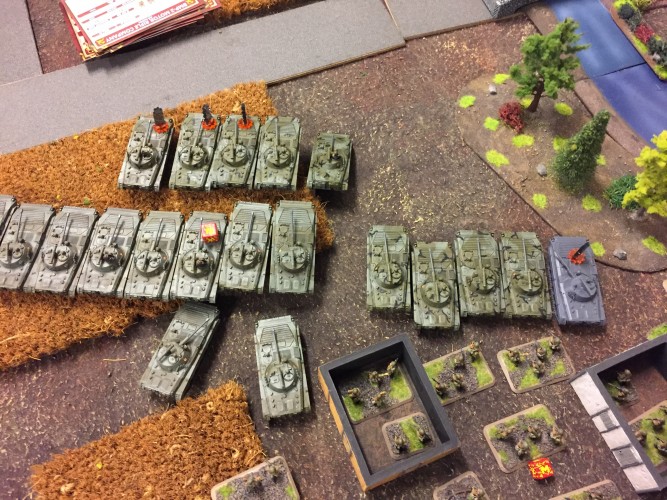
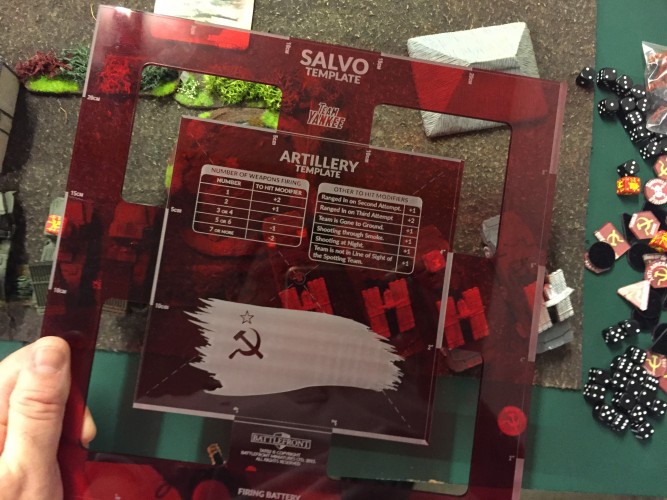
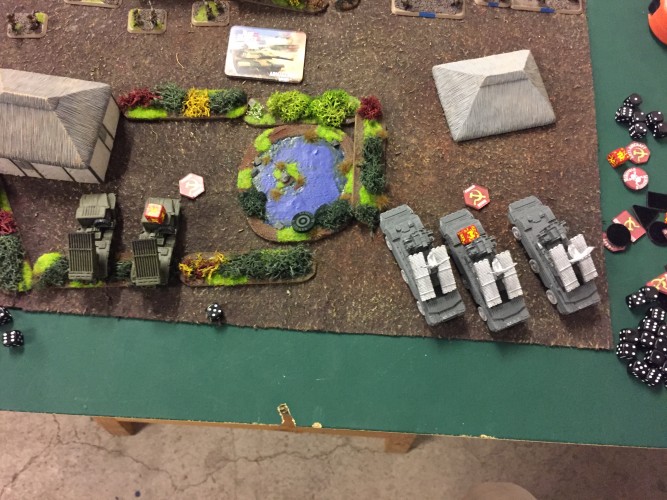

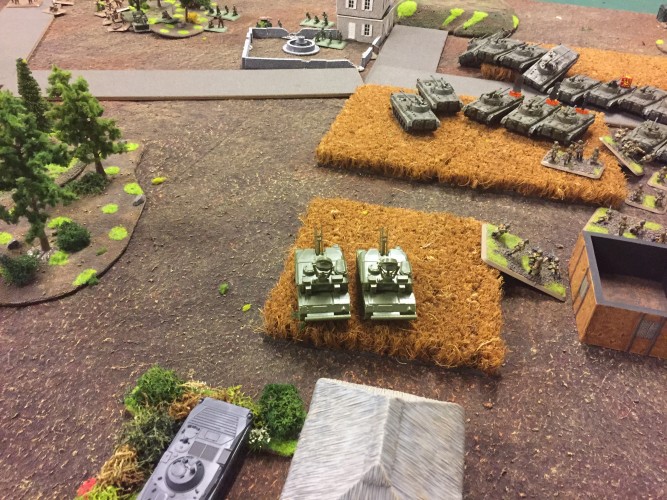

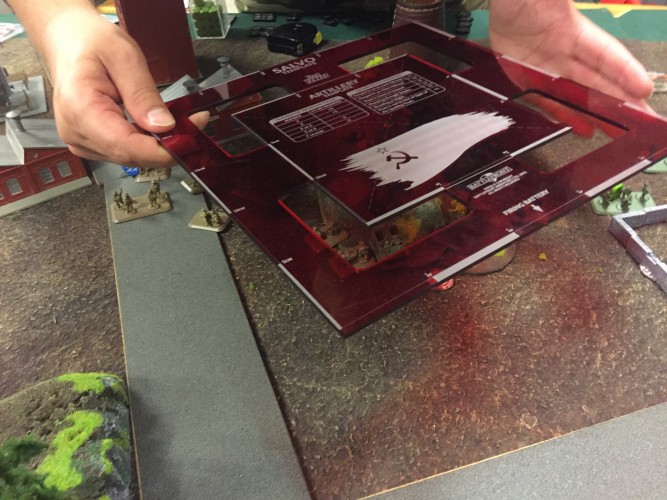
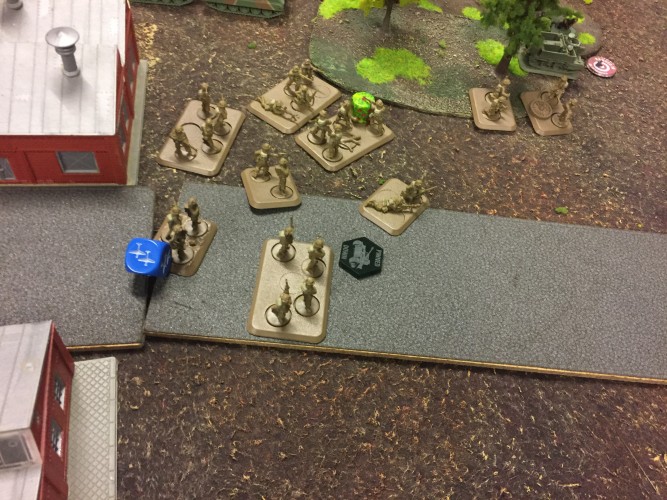


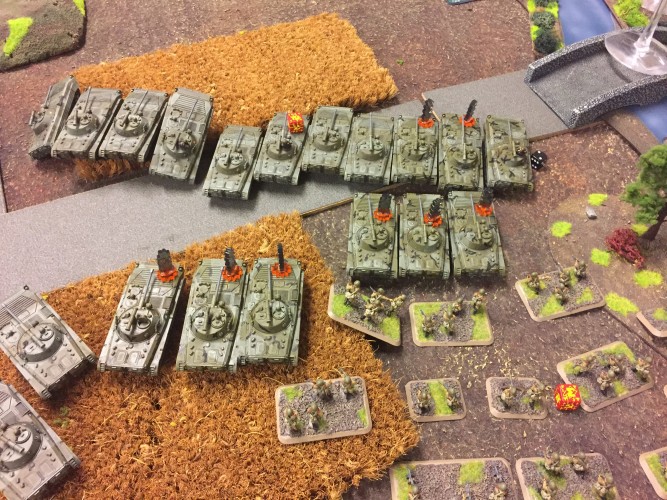
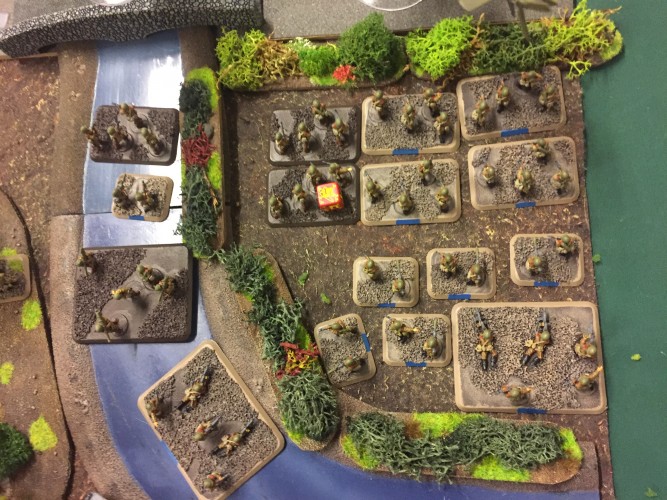


Very coo looking table there mate! 😀
Congrats for the win aswell!
Great huge report, nice work. Lots of models, fine painting, but why WP wins whyyy?
Really like this report and table. Congrats on the win, even if you are on the wrong side.
Great report
The picture story telling really works for this style of battle report, it was a good read!
Nice report with good pics. I´d appreciate to see more.
In depth report. I like the use of Rolands to make up for the lack of SAMs in the US arsenal.